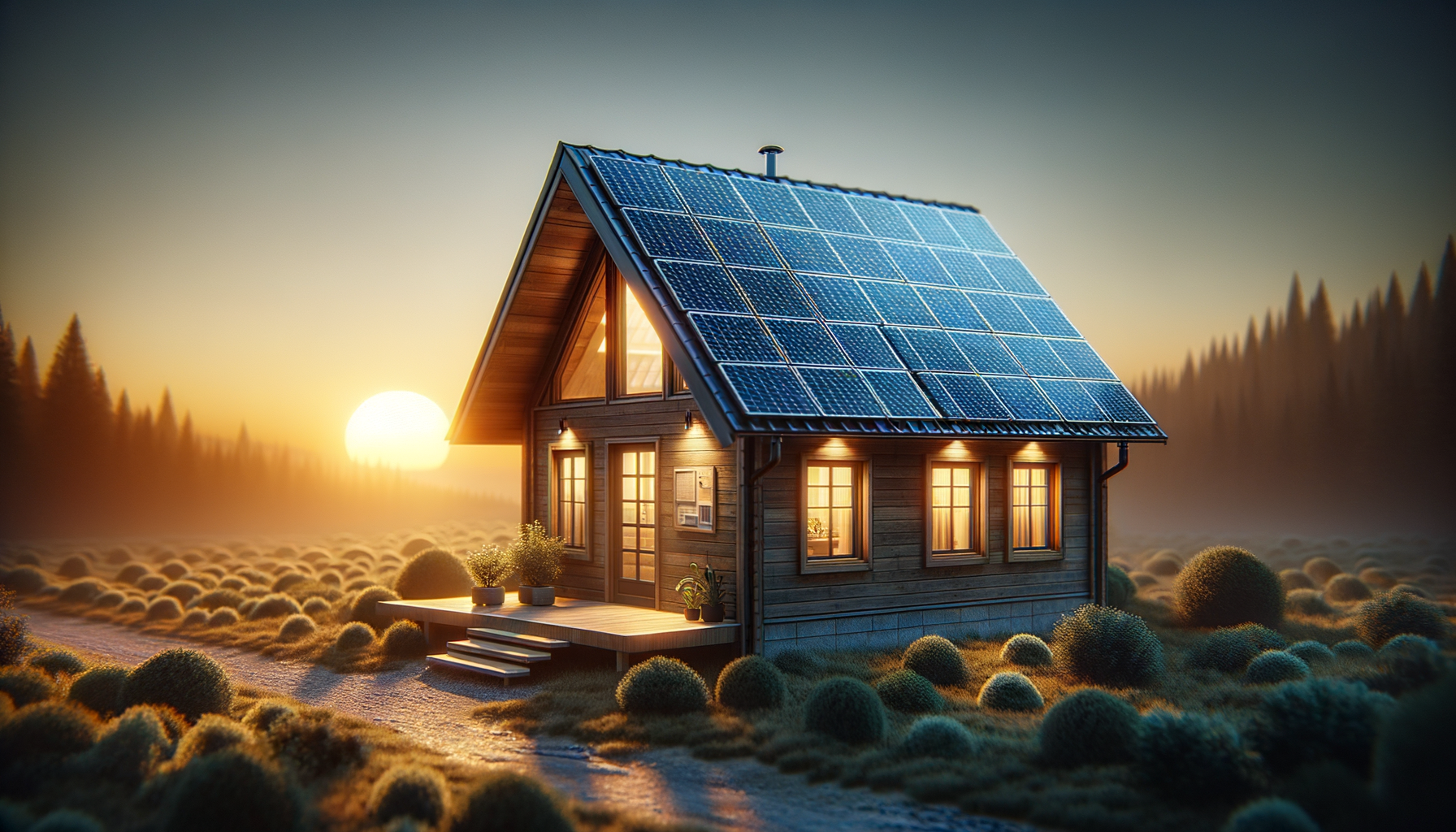Illuminating the Power of the Sun: How Do Solar Panels Work?

Updated 4 months ago
Illuminating the Power of the Sun: How Do Solar Panels Work?
Solar energy has become a cornerstone of modern renewable energy initiatives, and at the heart of this green revolution is the solar panel—a marvel of engineering that turns sunlight into usable electricity. In our journey to understand solar panels, we'll explore the science behind their operation, evaluate different solar technologies, and consider the implications of solar power on our electrical systems and environment.
The Basics of Solar Energy Conversion
At the most fundamental level, solar panels operate on the principle of converting light into electrical energy. This process, known as the photovoltaic effect, is facilitated by the properties of specialized materials within the solar cells. Solar panels are made up mainly of photovoltaic (PV) cells, which are semiconductors that can generate a flow of electricity when exposed to sunlight.
Photovoltaic Cells: Harnessing Sunlight
Each photovoltaic cell consists of two layers of semiconductor material, typically silicon, that are treated or 'doped' to create a positive side (p-type) and a negative side (n-type). This doping process introduces materials with different electron configurations into the silicon, creating an electric field at the juncture between the two layers.
When sunlight—comprised of photons—hits the solar panel, it can knock electrons loose from the atoms of the semiconductor material. These freed electrons are then set into motion by the internal electric field, resulting in a flow of electric current. To harness this current, conductive metal plates on the cell’s sides collect the electrons and transfer them to wires, allowing the current to be used as a power source.
Different Solar Technologies
Solar power is not a one-size-fits-all solution. There are various solar technologies designed for specific applications and needs. The most common ones you'll encounter are:
1. Monocrystalline Solar Panels
Monocrystalline solar panels are characterized by their uniform dark appearance and high efficiency. They are made from single-crystal silicon, enabling electrons to move freely through the cell, which optimizes performance but also comes with a higher price tag.
2. Polycrystalline Solar Panels
These panels have a bluish hue caused by the multi-crystalline silicon they are made from. While polycrystalline panels typically have lower efficiency and cost than monocrystalline ones, they offer a more budget-friendly choice for those looking to invest in solar energy.
3. Thin-Film Solar Panels
Thin-film panels are lighter and more flexible, created by depositing photovoltaic material on a substrate. These panels can be more versatile in how they're installed but also generally have lower efficiency rates.
Integrating Solar Panels Into Your Life
One doesn't have to venture far to notice solar panels on rooftops, in large utility-scale solar farms, or even integrated into everyday items, such as calculators and street signs. But solar panel installation is not just about placing a few panels; it's about integrating them into electrical grids that require careful planning and consideration of both the hardware (the panels themselves) and the non-hardware 'soft costs' like permits and installation.
Those considering solar panels also think about solar batteries, which store excess energy generated during the day to be used at night or during power outages. This storage capability makes solar power a resilient and reliable source of energy.
The Economic and Environmental Impact of Solar Power
Transitioning to solar energy can have profound impacts, not only on the environment by reducing the carbon footprint but also on the overall economy. The increase in solar panel installations helps create jobs and can contribute to local and national economic growth. On a personal level, solar energy can also mean reduced electricity bills and a potential increase in property value.
Choosing the Right Solar Panel System
Before making a solar panel investment, it is crucial to consider several factors:
- Energy Needs: First, calculate your household’s energy consumption to understand what size system you'll need.
- Location: Solar panels require proper positioning to maximize sunlight exposure. Your geographical location and roof angle play significant roles in determining the efficiency of your solar setup.
- Costs and Incentives: Look into the overall cost for your solar system and available tax incentives or rebates in your area, which can help offset the upfront investment.
To accurately gauge the costs and savings associated with going solar, you can use our convenient solar calculator. By entering your zip code, you will receive a tailored estimate for your specific solar project.
Future of Solar Power: Innovations and Trends
As research in the field of solar energy continues to progress, we can expect to see more efficient, durable, and adaptable solar technologies becoming available. Innovations like perovskite solar cells, which could potentially offer higher efficiency rates than silicon-based cells, and the development of integrated photovoltaic systems that could turn entire buildings into solar energy collectors, illustrate the dynamic future of solar power.
Learn More About Solar Energy
If you are enthusiastic about renewable energy and wish to learn more about how solar panels can benefit your life, why not start by calculating the potential savings? Tap into the clean and virtually infinite power of the sun and join the sustainable energy movement that's transforming our world.
Subscribe to our newsletter for more in-depth articles and insights into solar energy and home improvement. Keep up-to-date with the latest trends and technologies, and see how you could make a positive impact on both your wallet and the environment.
For those already considering taking the leap into solar power, remember that not all solar panel systems are alike, and your specific circumstances will determine what setup will be most effective. Whether you are looking to reduce your carbon footprint, cut down on electricity costs, or contribute to energy independence, solar power presents a compelling and sustainable choice.
Conclusion
Solar panels are a key piece in the puzzle of our future energy landscape. They offer a clean, abundant source of power that can help us reduce our dependence on fossil fuels and mitigate the effects of climate change. Understanding how they work is the first step towards embracing this technology and the benefits it can bring to our lives and the planet.
As we continue to expand our knowledge and infrastructure around solar power, the prospect of a world running on the sun's energy becomes ever more attainable. With the right information and tools at our disposal, including solar calculators and tailored advice, making the switch to solar has never been easier.
Now is the time to consider how solar panels can work for you. Calculate your solar energy potential today and take the first step towards a brighter, cleaner future.



